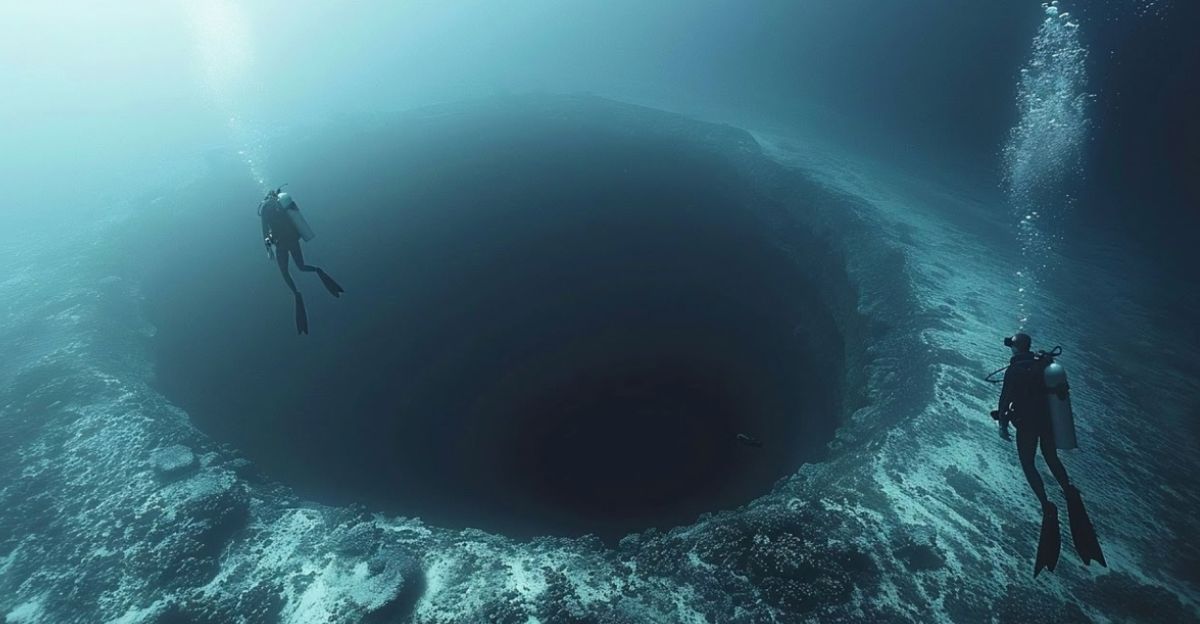
Beneath the ocean’s surface, off the central coast of California and along the Mid-Atlantic Ridge, lies a mysterious pattern of massive, evenly spaced holes that has baffled scientists for decades.
Despite major leaps in oceanographic technology, the origin of these peculiar features remains largely unexplained. Could we finally be closing in on an answer?
An Astonishing Discovery Off California’s Coast
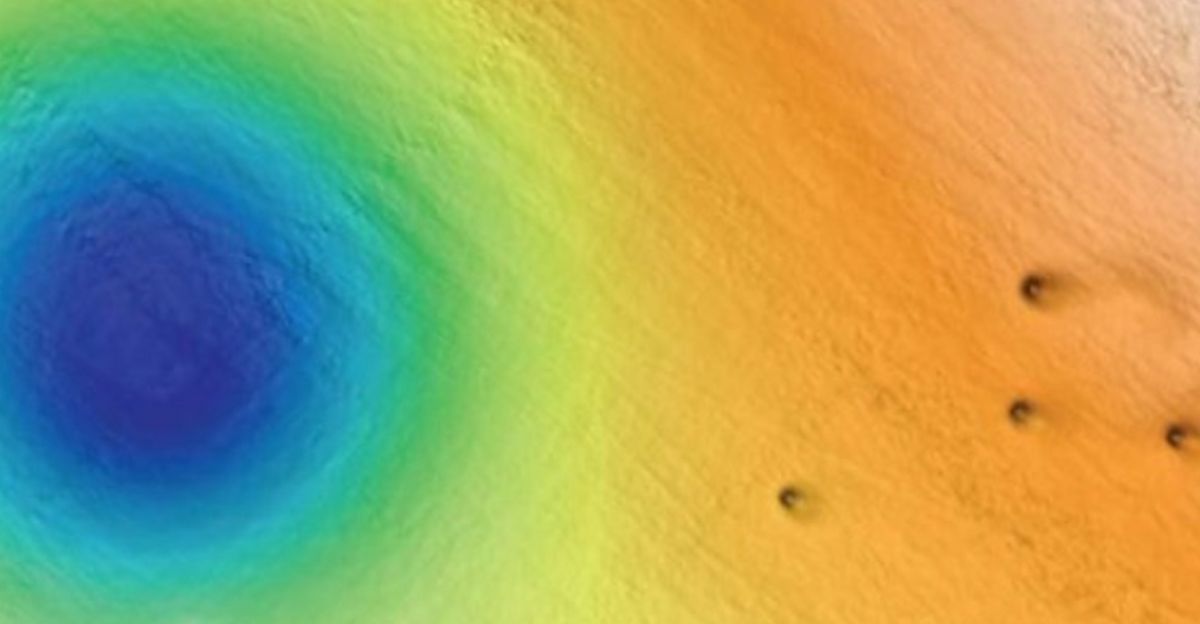
Near Big Sur, researchers uncovered a sprawling expanse of strange, round indentations on the ocean floor. Covering about 500 square miles—an area roughly equal to the size of Los Angeles—this massive field contains thousands of circular formations known as pockmarks.
Previously believed to result from methane gas erupting from beneath the seabed, this theory is now being challenged by new findings. Each pockmark averages around 36 feet wide and 3 feet deep. Alongside them are older, dormant depressions reaching up to 574 feet across.
Scientists identified around 15,000 smaller holes, dubbed “micro-depressions,” many of which are filled with human-made debris, stones, or organic matter.
Robotic Explorers Map the Ocean Floor

To explore these underwater formations in detail, the Monterey Bay Aquarium Research Institute (MBARI) deployed autonomous underwater vehicles (AUVs) and the remotely operated vehicle Doc Ricketts.
Equipped with high-resolution sensors and cameras, these robotic tools created detailed 3D maps and photomosaics of the seafloor. The team also gathered 540 sediment core samples, revealing ancient layers deposited by underwater landslides known as sediment gravity flows.
“We collected a vast amount of data, and it led us to a surprising link between the formation of pockmarks and deep-sea sediment movements,” explained MBARI’s senior research technician, Eve Lundsten.
The Enigma of the Sur Pockmark Field
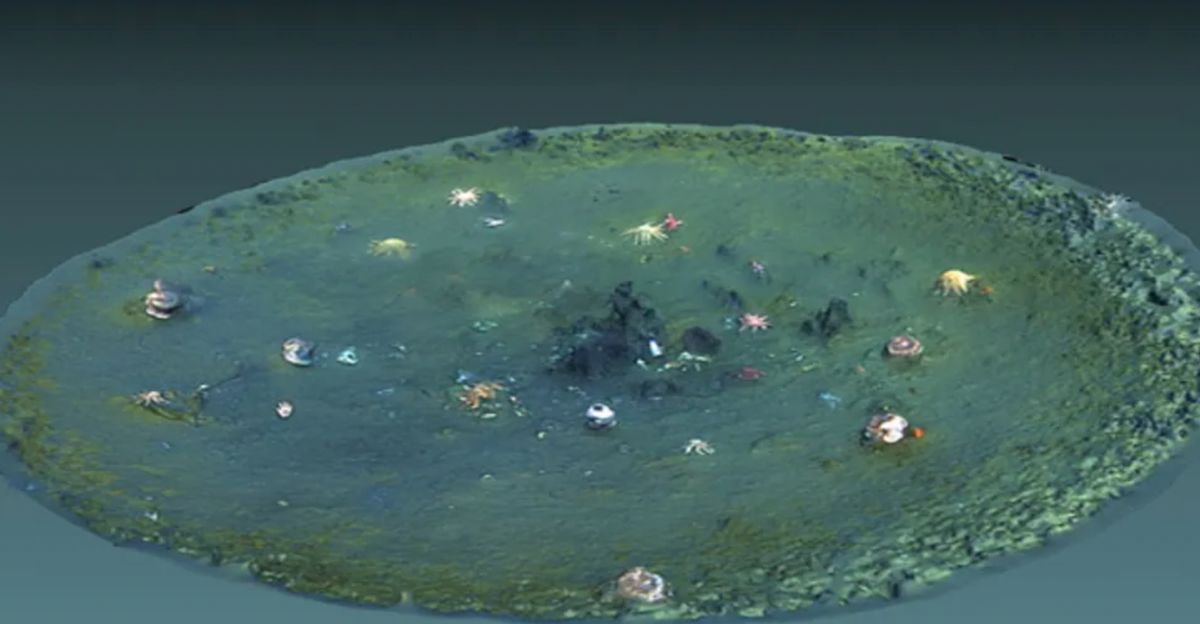
Located just offshore from Big Sur, the Sur Pockmark Field is one of North America’s largest known concentrations of seafloor depressions. With over 5,200 large, evenly shaped holes, it has attracted scientific attention not just for its size, but for its puzzling symmetry.
Originally, researchers believed the holes were the result of methane seepage—something that would make the seafloor unstable and problematic for future offshore wind energy projects. However, MBARI’s latest data indicates the area has remained geologically stable for hundreds of thousands of years.
Rethinking the Methane Hypothesis

For years, the methane theory seemed plausible. But MBARI’s new analysis turned up no signs of gas leakage—no methane vents, no chemosynthetic lifeforms, and no chemical markers typical of fluid escape.
Instead, the sediment cores revealed recurring deposits of coarse material left by ancient underwater avalanches. These sediment gravity flows—triggered by seismic activity or slope collapses—appear to have formed and maintained the pockmarks over a span of more than 280,000 years.
A Closer Look at the Micro-Depressions
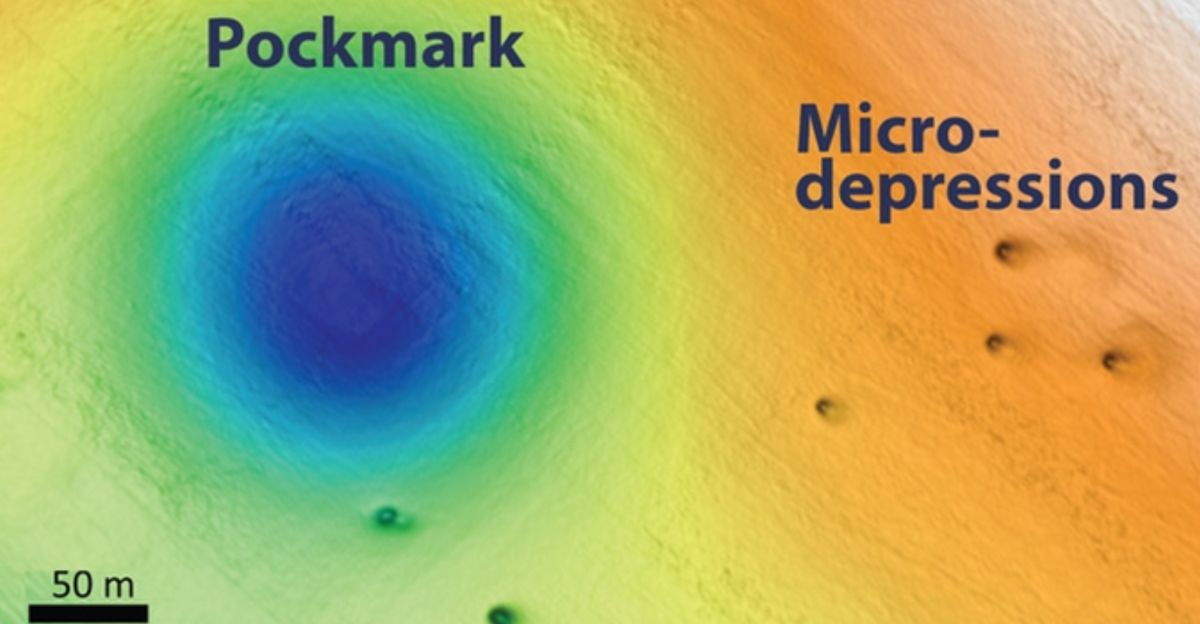
Alongside the larger pockmarks, scientists found a high concentration of smaller, shallower holes. These “micro-depressions” are likely much younger, formed by recent erosion events rather than ancient geological processes.
Many are filled with bones, plant matter like kelp holdfasts, rocks, and even modern trash. “We were shocked not just by their abundance, but by the fact that we hadn’t noticed them before,” Lundsten said.
These small depressions may form when heavy objects settle on the soft seafloor, creating a habitat for fish and other creatures. Their movement disturbs the fine sediment, which currents slowly wash away—gradually deepening the holes.
Relevance for Renewable Energy Projects

Understanding the origin and stability of these seafloor features is critical for the development of offshore wind farms. If the pockmarks were the result of ongoing geological activity or gas release, they could pose a structural risk to turbine foundations.
Fortunately, the discovery that these features have remained largely undisturbed for millennia suggests the region may be suitable for renewable energy development.
“If we’re going to cut carbon emissions and fight climate change, expanding renewable energy is non-negotiable,” said MBARI President and CEO Chris Scholin.
Unanswered Questions Remain
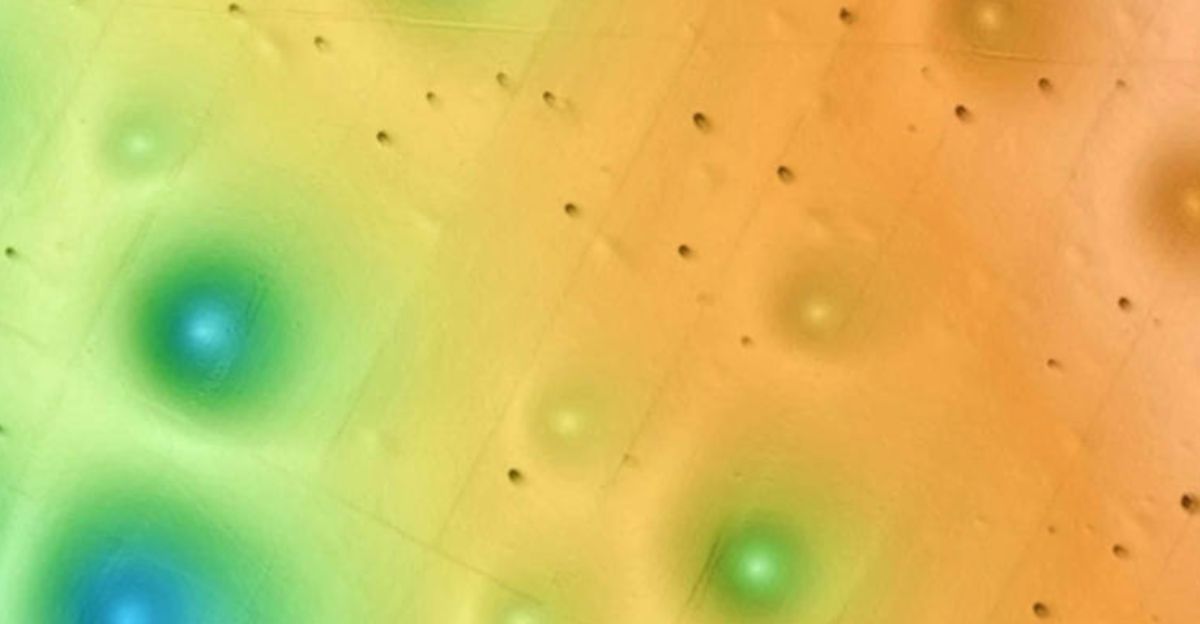
Despite major progress in understanding how these features persist, many questions remain unanswered. What exactly triggers sediment gravity flows? Why are the holes so regularly spaced? Could ocean currents, sediment makeup, or subtle tectonic patterns be shaping them?
The regularity of both the large pockmarks and the micro-depressions continues to intrigue researchers, hinting at underlying natural rhythms that are not yet fully understood.
A Habitat for Marine Life—and Trash

Interestingly, many of the micro-depressions now serve as miniature ecosystems. About 30% of them contain human debris, while others house bones and natural matter that attract marine creatures.
These animals disturb the soft seafloor as they forage and shelter, which may help further shape the depressions over time. “As we watched in ROV dives, fish would stir up the sediment, and the fine particles would drift away with the currents,” noted one researcher.
“This ongoing activity seems to contribute to the deepening of these little holes.”
What’s Next for Ocean Floor Exploration?

Expeditions like those conducted by the E/V Nautilus, in collaboration with NOAA Ocean Exploration, are continuing to survey deep-sea environments worldwide—from the Aleutian Arc to the Mariana Trench.
With live-streamed dives and real-time data collection, researchers are steadily peeling back the layers of the ocean’s most puzzling mysteries. As technology improves and exploration expands, we’re likely to uncover even more secrets hidden beneath the waves.
Explore more of our trending stories and hit Follow to keep them coming to your feed!

Don’t miss out on more stories like this! Hit the Follow button at the top of this article to stay updated with the latest news. Share your thoughts in the comments—we’d love to hear from you!







